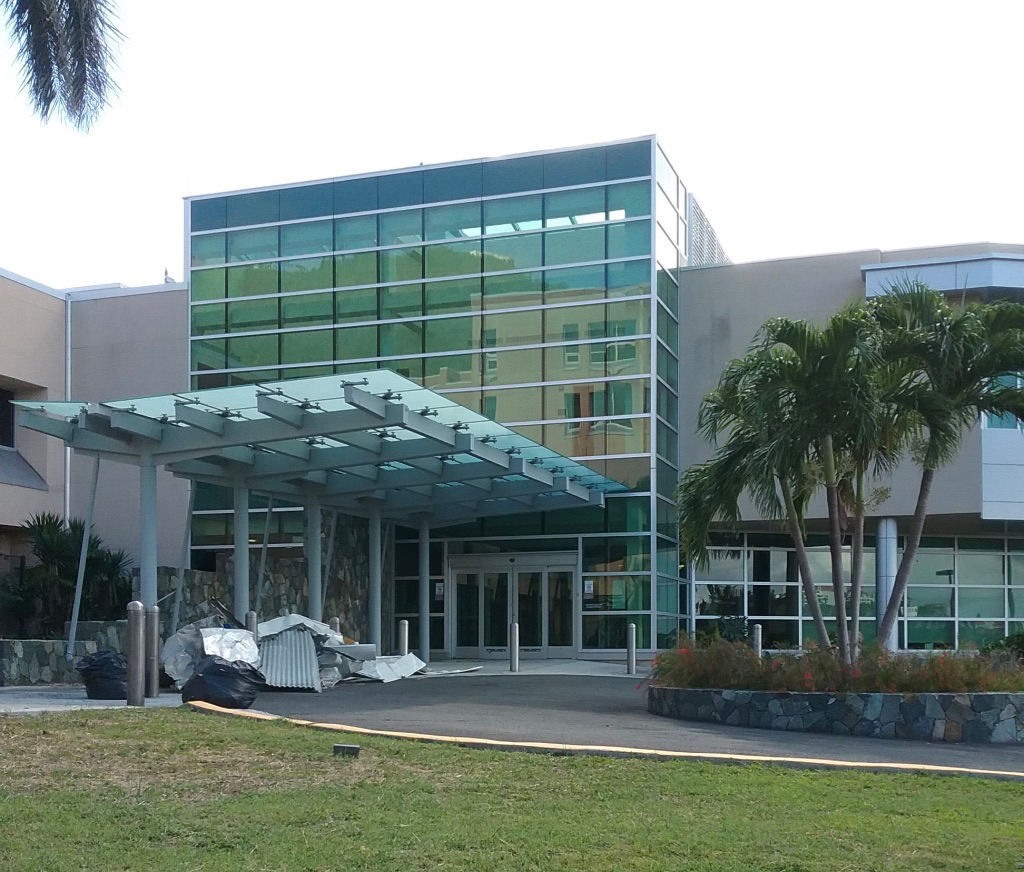
Could the 2017 hurricanes have damaged community health even more than we thought? A recently published report suggests so.
The peer-reviewed study, published online in October by the American Journal of Public Health, goes so far as to pose the possibility that hundreds of Virgin Islands residents died as a result of the storms’ long-term effects on the territory’s health system.
However, this idea is more of an educated guess than a quantitative conclusion. The study’s authors note that their efforts to delineate the state of health care in the chaotic weeks and months following the storms were hampered by a paucity of record keeping, itself in large part a consequence of hurricane damage.
They came up with the death estimate by comparing the V.I. experience with that of its much larger neighbor, Puerto Rico. There were 64 deaths in Puerto Rico attributed directly to Hurricane Maria, and an official estimate of between 1,139 to 4,645 of “excess” or indirectly related deaths. In the Virgin Islands, where both Maria and Irma struck in September of 2017, there were five deaths directly attributed to the storms.
So, the authors said, “Extrapolating from the ratio of official deaths to hurricane-related excess deaths in Puerto Rico, it is possible that there were several hundred hurricane-related excess deaths in the USVI.”
While the study was limited, it does document much about the health needs of residents before and in the aftermath of the storms as well as the challenges facing health care providers who tried to meet those needs.
“Health Impacts of Hurricanes Irma and Maria on St. Thomas and St. John, U.S. Virgin Islands, 2017-2018,” focuses almost entirely on the sole hospital on St. Thomas, Schneider Regional Medical Center, which serves both St. Thomas and St. John.
The paper is the work of a dozen researchers from several departments at the University of Florida, Gainesville, and from the University of Maryland, Baltimore, as well as two individuals listed as “with Schneider Regional Medical Center,” Clayton Wheatley and Barnard Wheatley. (Barnard apparently is

a typo for Bernard Wheatley, the chief executive officer for SRMC, who was unavailable for comment for this story Monday and Tuesday.)
Listed first among the authors is Muhammad Abdul Baker Chowdhury of the University of Florida’s College of Medicine; listed as the author to receive correspondence is John Glenn Morris Jr. of the university’s Emerging Pathogens Institute.
The researchers based their study primarily on records provided by SRMC and interviews with members of its staff. They reviewed administrative records from 10,716 emergency department (or emergency room) visits from three months prior to Irma, from the approximately two-week period between Irma and Maria and for three months after the storms. They also reviewed charts from 597 randomly selected emergency department encounters, some following Irma, some after Maria. They conducted structured interviews with emergency staffers several months later, in March 2018 and with a wider network of hospital staff the following July. They also reviewed scores of published accounts by the Federal Emergency Management Agency and by local media.
As residents know and as the report describes, the challenges facing medical personnel were stark. When Irma made landfall, “SRMC experienced loss of power, collapse of the fourth floor of the hospital, destruction of the building housing its cancer center and flooding of the ED [emergency department],” the report reads. “There was also loss of the electronic medical record system, necessitating a shift to paper records for approximately one month.”
Although Maria saved its full force for St. Croix and for Puerto Rico, it was far from a non-event for St. Thomas.
“[W]idespread flooding and additional wind damage led to further destruction and halted recovery operations on St. Thomas,” the report noted.
Tents set up on the hospital grounds to temporarily serve patients had to be abandoned as Maria approached.
Damage inflicted by the storms on St. Thomas included the destruction of the cardiac catheterization laboratory, flooding on multiple floors of the hospital, the loss of X-ray equipment and other diagnostic tools, and damage to the island’s only magnetic resonance imaging machine, which is in a private medical facility. There was also a drain of medical personnel, not only at the hospital but also in the private sector, as many moved temporarily or permanently away from the devastation.
“The emergency response to both hurricanes in all three USVI islands brought in an estimated 13,000 service and rescue personnel, resulted in the evacuation of close to 800 patients, left almost 40,000 without power, and generated in excess of 200,000 million cubic yards of debris,” the report states.
Medical staff interviewed by the researchers expressed particular concerns about two major groups: the elderly and people with chronic conditions.
“Among the elderly, there were damaged social and support networks, which affected the ability of patients to live independently and manage health,” according to the report. And the elderly were least capable of evacuation to a setting where they could get better care.
While there had been massive evacuations of patients needing dialysis both before and between the storms, many people with other types of chronic illness were left behind. Staff worried about those who could not get medications for chronic conditions such as diabetes, asthma and heart disease.
“The hurricanes had a direct health effect on motor vehicle collisions, primarily because of downed traffic lights, damaged streetlights and damaged roadways,” the report says. “The hurricanes were also perceived to have amplified behavioral and mental health issues on the island, such as thefts resulting in gunshot wounds, domestic violence, alcohol use disorders and depression.”
Records did not substantiate all of the staff perceptions. For instance, “By contrast with the perception in the structured interviews, an analysis of the reported triage priority level indicated that overall severity of illness was reduced in the post-hurricane period,” the report concludes.
Records did indicate that there were an increased number of people seeking relief for skin and breathing problems in the weeks and early months after the storms – a possible indication of reactions to mold and to (re)building materials.
Records paint a dismal picture of health care following the storms, but, “of greater concern are the data that we do not have,” the report notes. “A key problem was the lack of data on off-island transfers” – a situation that has drawn significant public criticism for two years.
The report concludes with a warning that severe hurricanes are expected to increase in frequency because of global warming and “disasters tend to magnify existing weaknesses in health care infrastructure and arrangements.”
The report offers no specific actions to mitigate the damage from future storms, but says “it is our hope that their impact can at least be minimized, particularly for highly vulnerable patient groups such as the chronically ill and elderly.”





